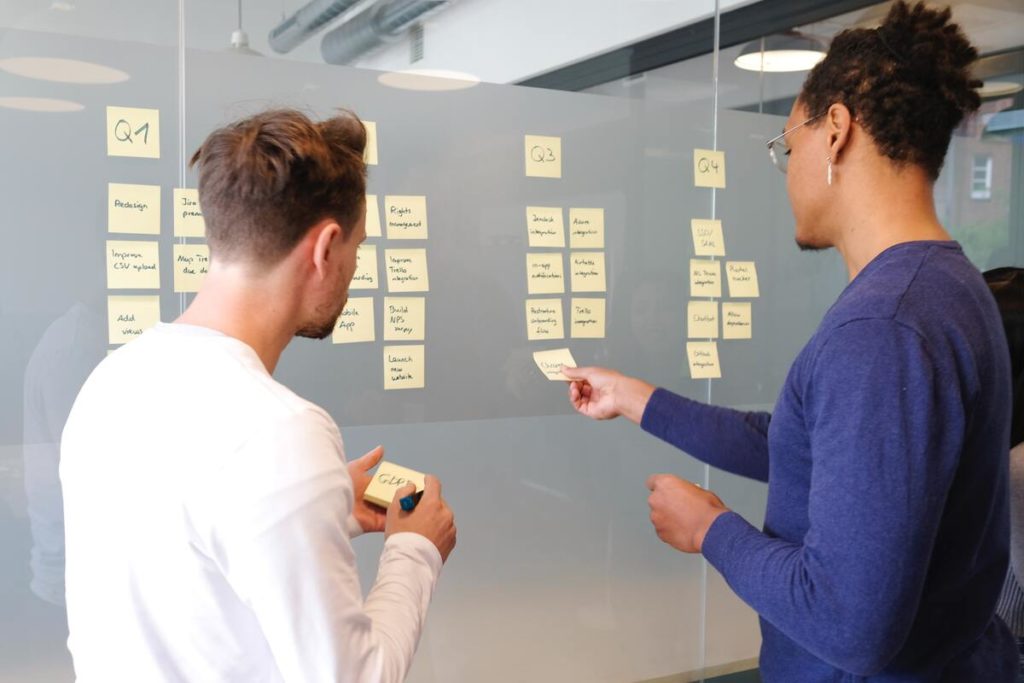Brainstorming is a familiar technique used in many organizations to foster innovation. The premise is simple: good ideas are hard to come by, so you bring many creative people together. Give them the freedom to throw multiple ideas at the proverbial wall, and eventually, you’ll find something that sticks.
Maybe you’ve participated in a brainstorm and felt empowered by your involvement. There’s a feel-good effect when you collaborate in an environment where criticism is restrained, and no idea is too far-fetched. But science tells us that brainstorming doesn’t really work.
The model of a brainstorming session actually contains some elements that are essential to innovation, but it’s also missing two that are easily overlooked.
The need for perspective
When you learn something new, it’s easy for your mind to get fired up with ideas. You feel creative as you start making fresh connections. For this reason, it feels natural to try to replicate the optimal learning environment when seeking to innovate.
But the mechanisms operate differently. Learning an established skill means you benefit greatly from interacting with others whose expertise in that area is similar or greater than yours. Joining a community for online course creators, for instance, will quickly get you up to speed even if you have zero knowledge of Facebook groups or email marketing.
Innovation isn’t the same as learning. You’re trying to come up with something original. Sometimes, interacting with people who are all skilled in the same things as you can actually steep you in groupthink. This is what tends to happen in brainstorming sessions at many companies.
To borrow from career coach Marshall Goldsmith, “what got you here won’t get you there.” You’re the average of the people you spend time with, and that’s wonderful for learning but stifles innovation with sameness. Yes, participation in a brainstorming team or community can foster innovation, but only if the members also have increasingly diverse backgrounds and perspectives.

Recombinant innovation
Another factor organizations overlook when it comes to fostering innovation is time. In fact, they frequently operate in a manner that curtails innovative potential where time is concerned.
Brainstorming sessions take place with an eye towards specific deadlines. Ad hoc teams are assembled to achieve a particular objective and cease to exist thereafter. People are encouraged to bring creative ideas to the table but discouraged from bringing attention to problems if they don’t already have a solution in hand.
These attitudes don’t incentivize open-ended thinking; they circumscribe it.
The need for time in innovation is exemplified by the history of technological development. In Connections, James Burke chronicles how landmark inventions such as the printing press, the incandescent light bulb, and the mechanical clock both relied on previous discoveries and led to subsequent ones.
The catch is that such progress often took place over great swaths of time. Key inventors such as Gutenberg and Edison had to be in the right place and time to make the necessary connections, piecing together the component technologies through breadth of knowledge.
Technological innovation is founded on a process of search and recombination. Before the Industrial Revolution, this often happened blindly. With luck and timing, a few experts who were abreast of certain technological advances might encounter new ideas during their travels, correspondence, or interaction with experts in a different domain.
Allowing ideas to ferment
In modern organizations, we strive to make the process of innovation more deliberate. We have more powerful tools at our disposal to search and learn about the latest developments in a particular field. The internet allows us to follow industry experts and even gain insight into the internal workings of competitors.
But the same ingredients that have proven so essential to technological progress throughout history apply to our efforts to foster innovation today. And we’re so often guilty of overlooking the need for open-ended collaboration across disciplines.
Brainstorming fails when it’s bounded by a short-term outlook. Or when you put together people who all think alike and share the same expertise, which leads to everyone agreeing on the lowest common denominator in terms of idea quality. Digital search technology isn’t the solution to innovation, either. It can even prove a hindrance by reinforcing sameness through existing knowledge networks.
Sometimes, good ideas can only happen if you give them time to ferment. You need diversity among collaborators and the slight discomfort caused by dissent and criticism rather than unconditional acceptance of ideas. Instead of keeping everyone locked up in a brainstorming session, let them stay in touch and continue working on their own, sharing periodic updates. If you wait, the pieces will fall into place, and the breakthroughs will happen.







